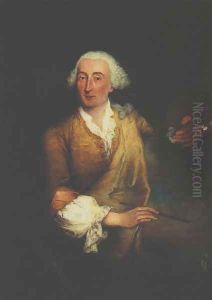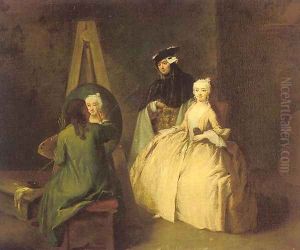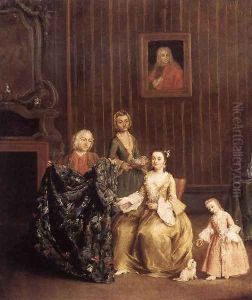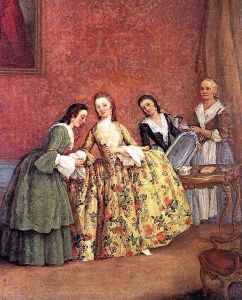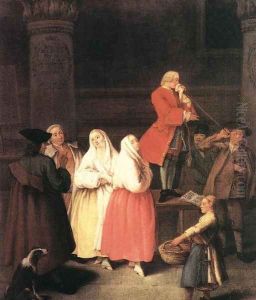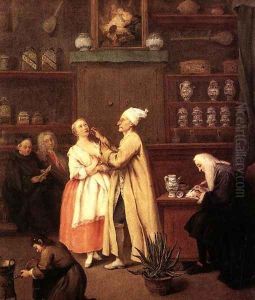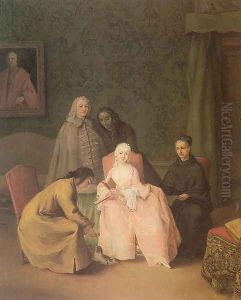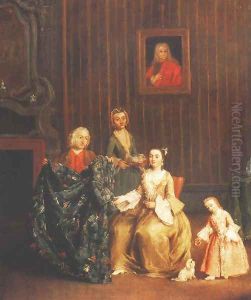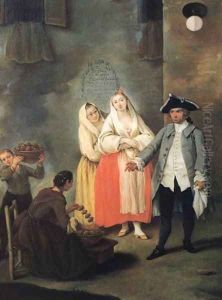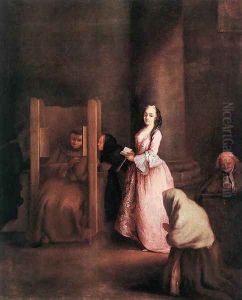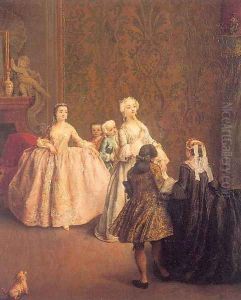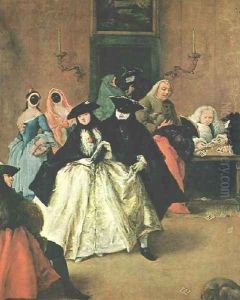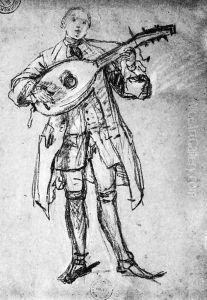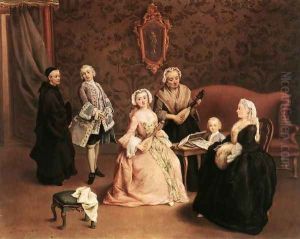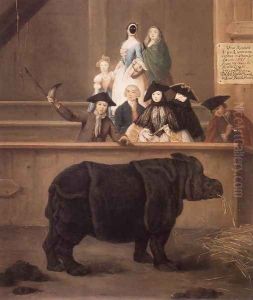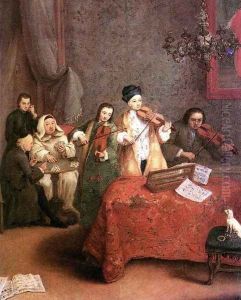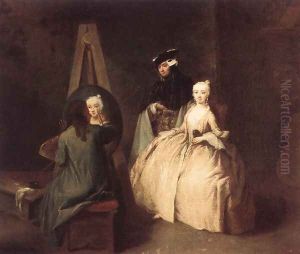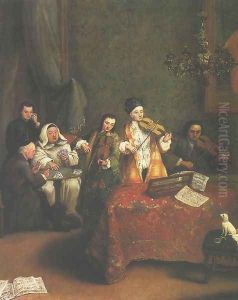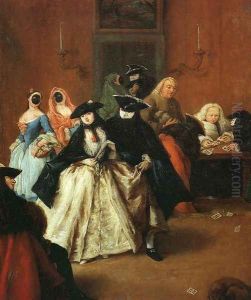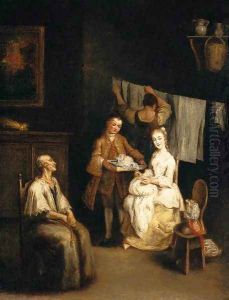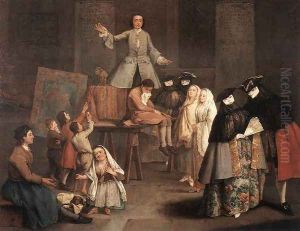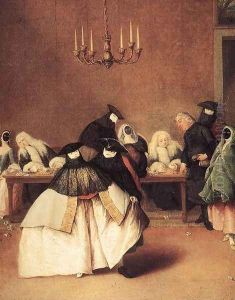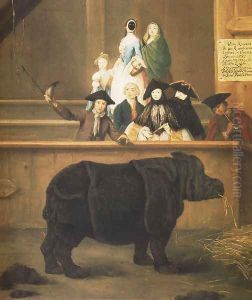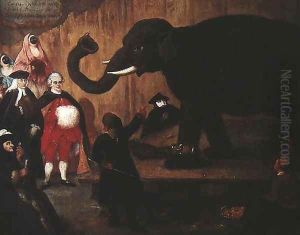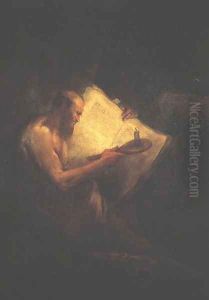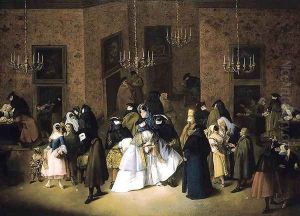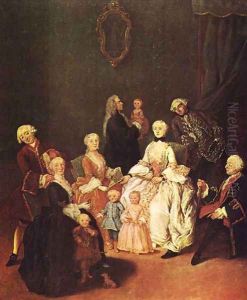Pietro Falca (see Longhi) Paintings
Pietro Longhi, born Pietro Falca, was an Italian genre painter of the Venetian school. He is best known for his detailed, intimate depictions of domestic and public life in 18th-century Venice. Longhi was born in 1702 in Venice, then the capital of the Venetian Republic. He initially trained with the painter Antonio Balestra, who was one of the leading Venetian painters of the time. However, his style was also influenced by the Bolognese School and the work of Giuseppe Maria Crespi, who was known for his genre paintings.
Longhi's early works included religious themes and portraits, but he eventually specialized in scenes of contemporary Venetian life. His paintings often contain elements of gentle satire and keen social observation, featuring characters from a cross-section of society, from patricians to servants. Unlike the grand historical and mythological subjects favored by many of his contemporaries, Longhi's canvases are marked by a focus on the ordinary and the everyday. This approach made his work unique and has given modern viewers a valuable glimpse into the 18th-century Venetian society.
Longhi's work was in demand throughout his career, and he enjoyed the support of wealthy patrons. His paintings were often small in scale, suitable for private collections, and he was known for his meticulous attention to detail, particularly in the depiction of textiles and interior settings. Besides genre scenes, Longhi also produced a series of paintings documenting the lives of the Venetian nobility, including their elaborate costumes and the interiors of their palaces.
Despite the popularity of his work in Venice, Longhi did not achieve the same level of international fame as some of his contemporaries, such as Canaletto or Tiepolo. However, his paintings are now recognized for their historical value and artistic merit. Longhi continued to paint up until his death in Venice in 1785. Today, his work can be found in major museums around the world, offering a window into the world of 18th-century Venice.
